Human urinary exosomes in bladder cancer patients: properties, concentrations and possible clinical application

OBJECTIVE: High grade bladder cancer is extremely aggressive. Early detection is thus an important challenge. Development of non-invasive diagnostic tools particularly using urine samples could be of importance in the diagnosis and surveillance of these patients. Exosomes are small vesicles present in the urine and have the potential to be used as biomarkers of cancer. Thus studies of the properties and concentrations of these particles in bladder cancer patients are of importance.
MATERIALS AND METHODS: The concentration of exosomes present in urine was determined by nanoparticle tracking analysis using a Nanosight LM10 unit. Clinical urine samples were routinely collected and fixed using Preservcyt. The morphology of exosomes was studied in electron micrographs and characteristic exosome markers using Western blots.
RESULTS: The exosome concentration of fixed samples stored at room temperature was constant for 48 hours and the same as fresh samples. Exosomes derived from patients presenting for a transurethral resection of their bladder tumor exhibited the exosome markers ALIX and TSG101 and also the classic cup shaped appearance in electron micrographs. The concentration of exosomes in patients presenting for transurethral resection of a bladder tumor was significantly greater than in patients presenting for check cystoscopy with no recurrence (median 77.2 compared with 38.8 × 108, P<0.001). A ROC analysis (area under the curve 77.4%) suggested that a suitable cut-off concentration of 85 × 108 is associated with a sensitivity of 43% and specificity of 91% for diagnosing bladder cancer.
CONCLUSIONS: Thus the concentration and properties of exosomes can be conveniently studied in fixed urine samples derived from bladder cancer patients. The characteristic properties of exosomes were preserved and increased numbers were found in patients presenting for transurethral resection of their tumor. With an appropriate cut-off value, urinary exosome concentrations may have utility in excluding a cancer recurrence when monitoring patients successfully treated for bladder cancer.
INTRODUCTION
MATERIALS and METHODS
Collection and processing of urine samples
Analysis of exosome concentration
Western blotting
Transmission electron microscopy
Statistical analysis
RESULTS
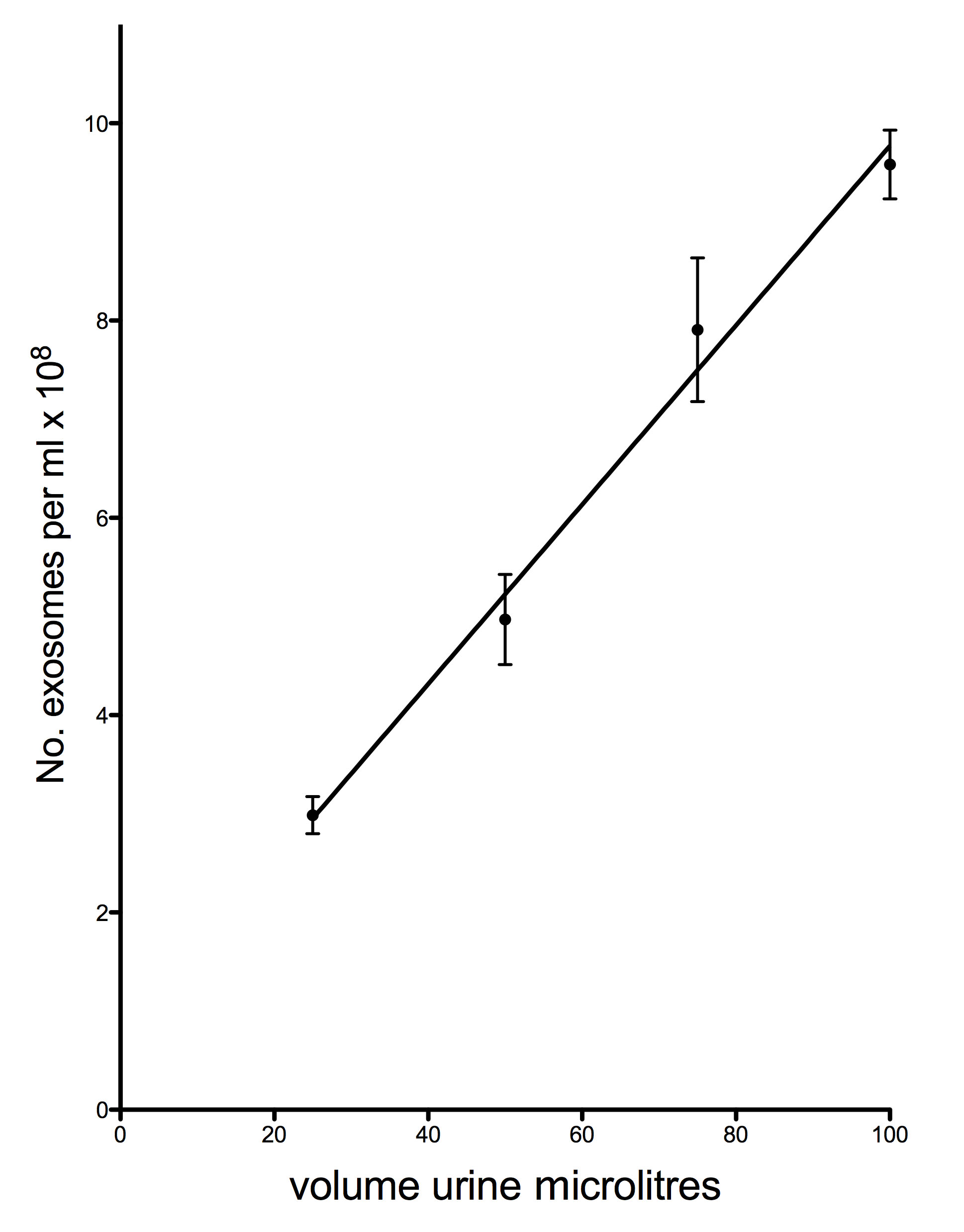
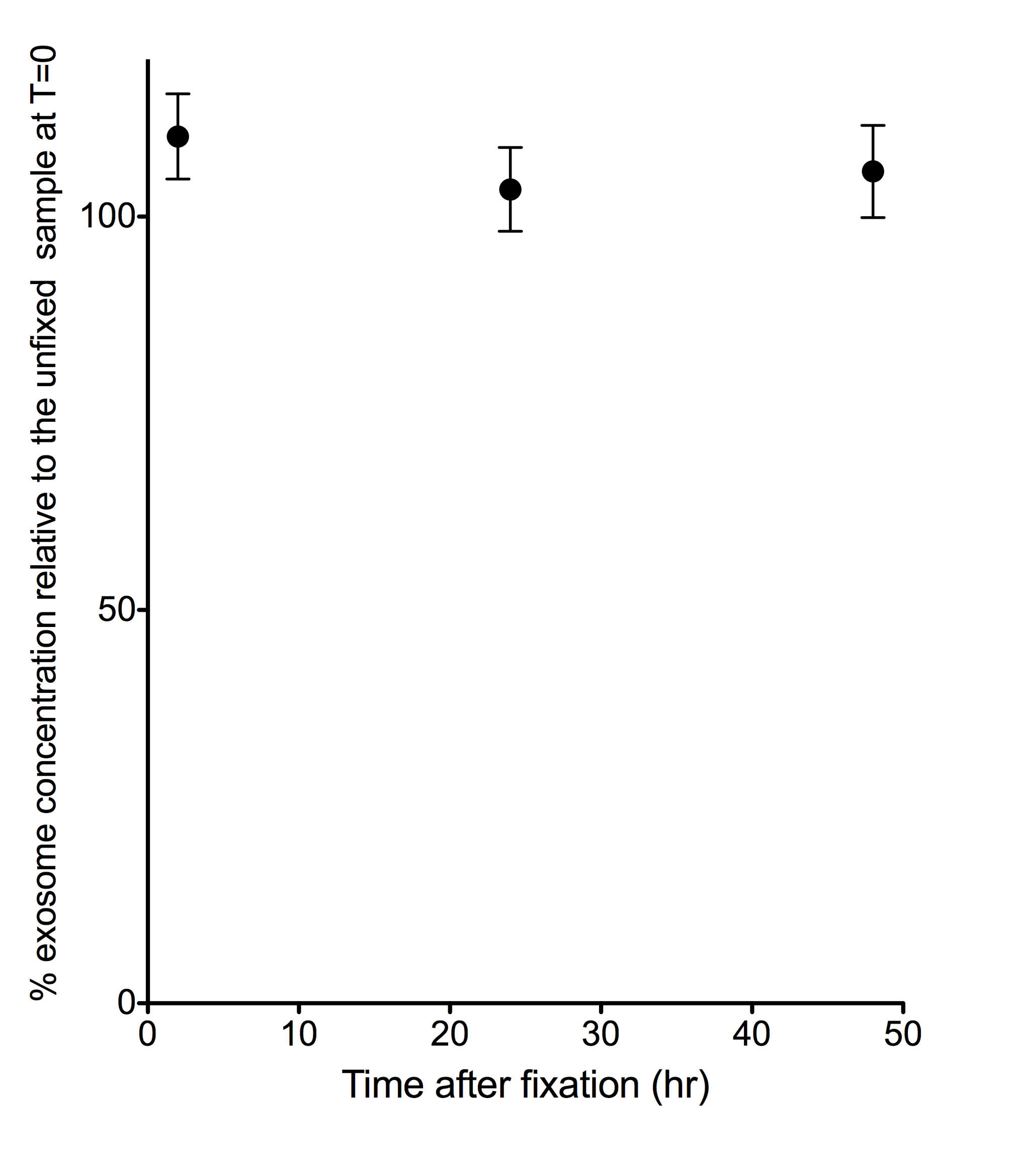
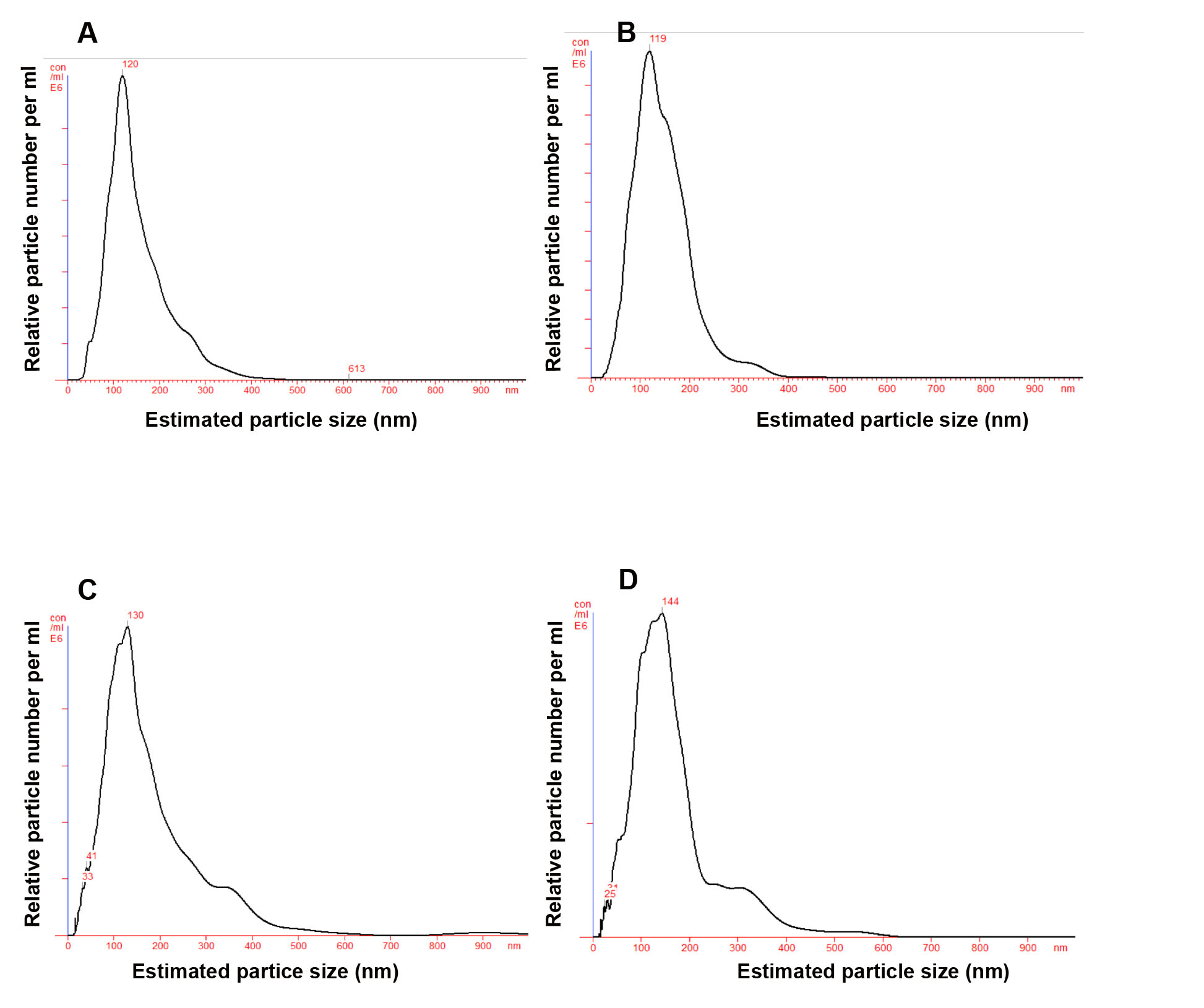
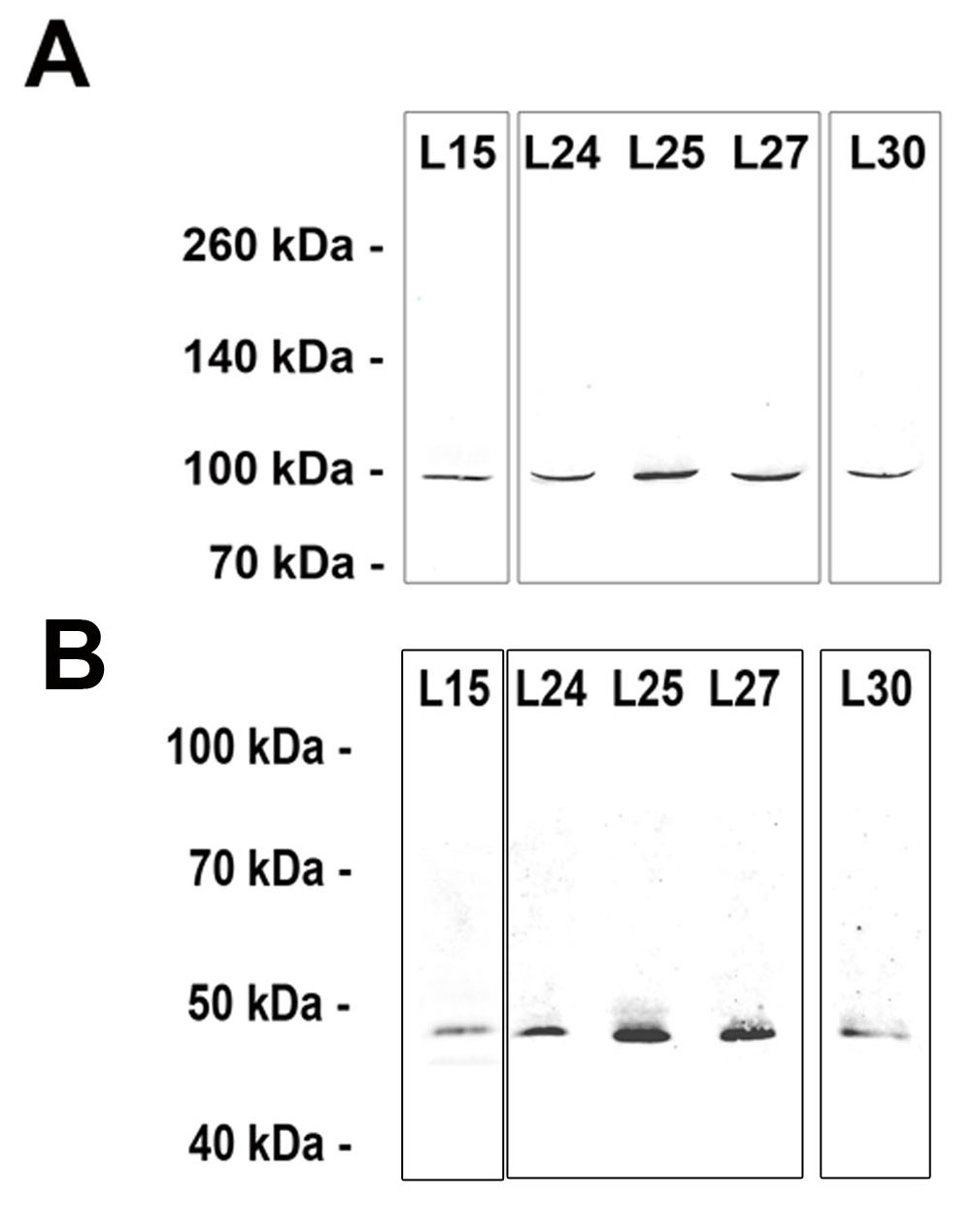
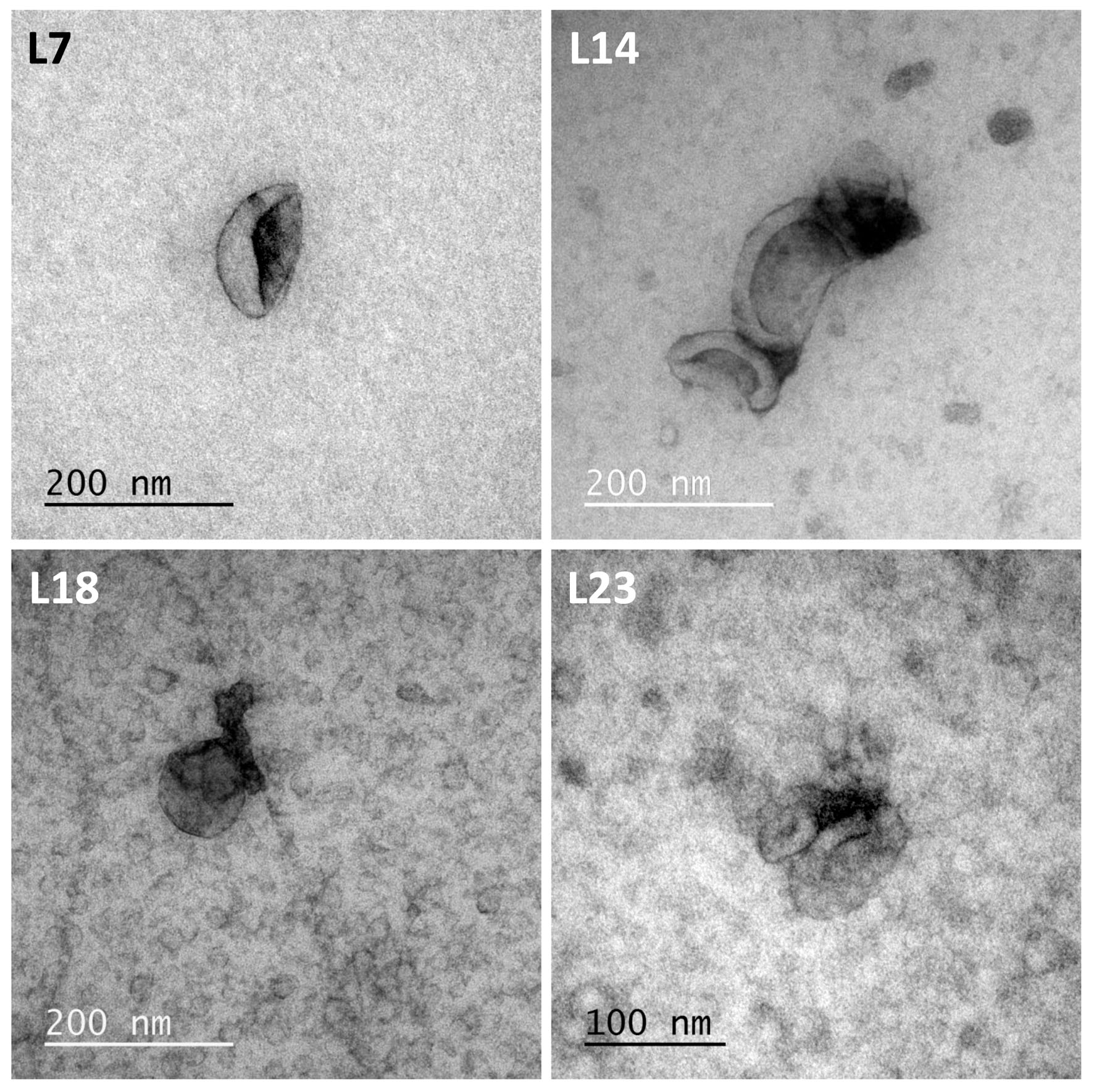

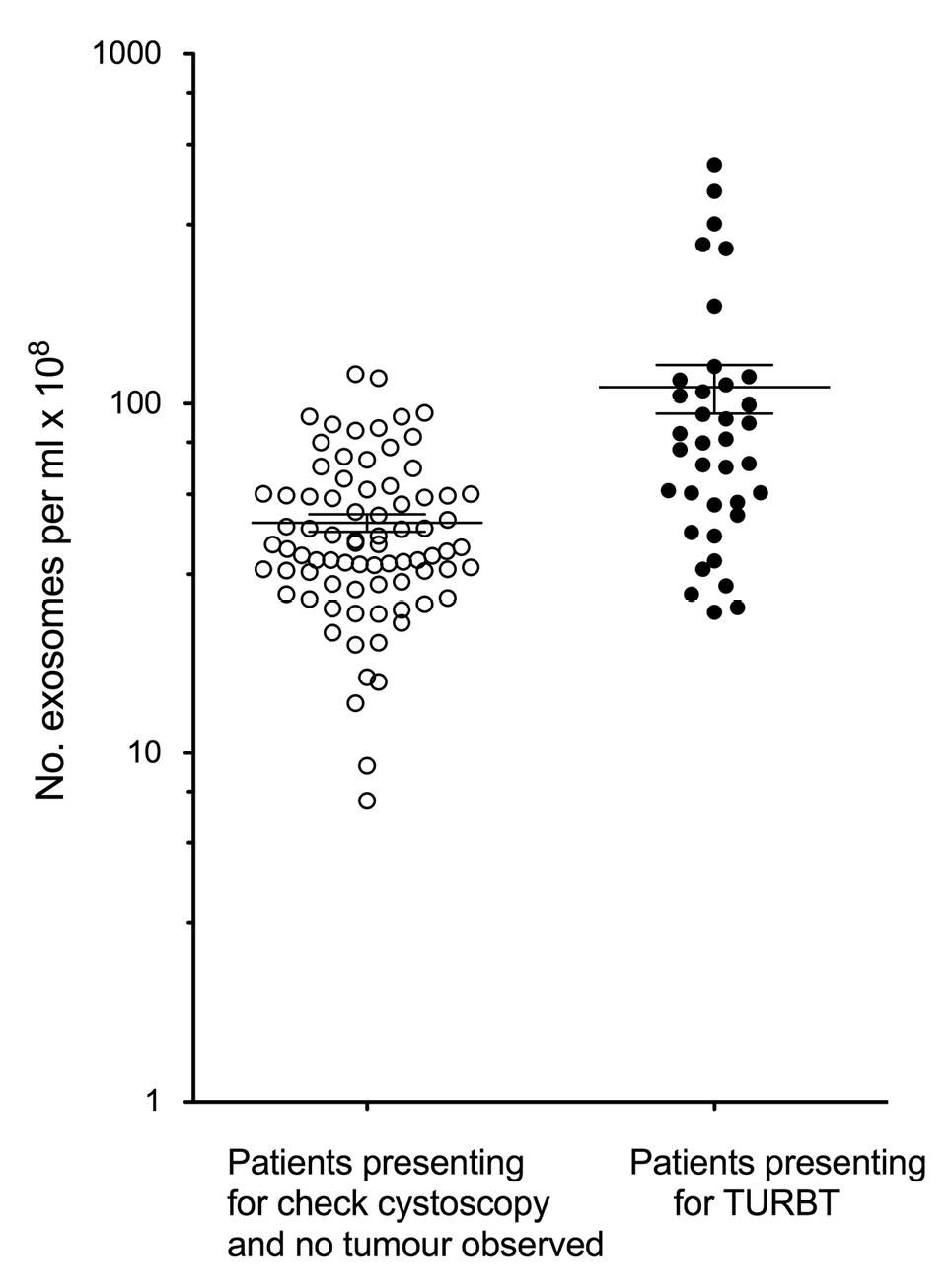
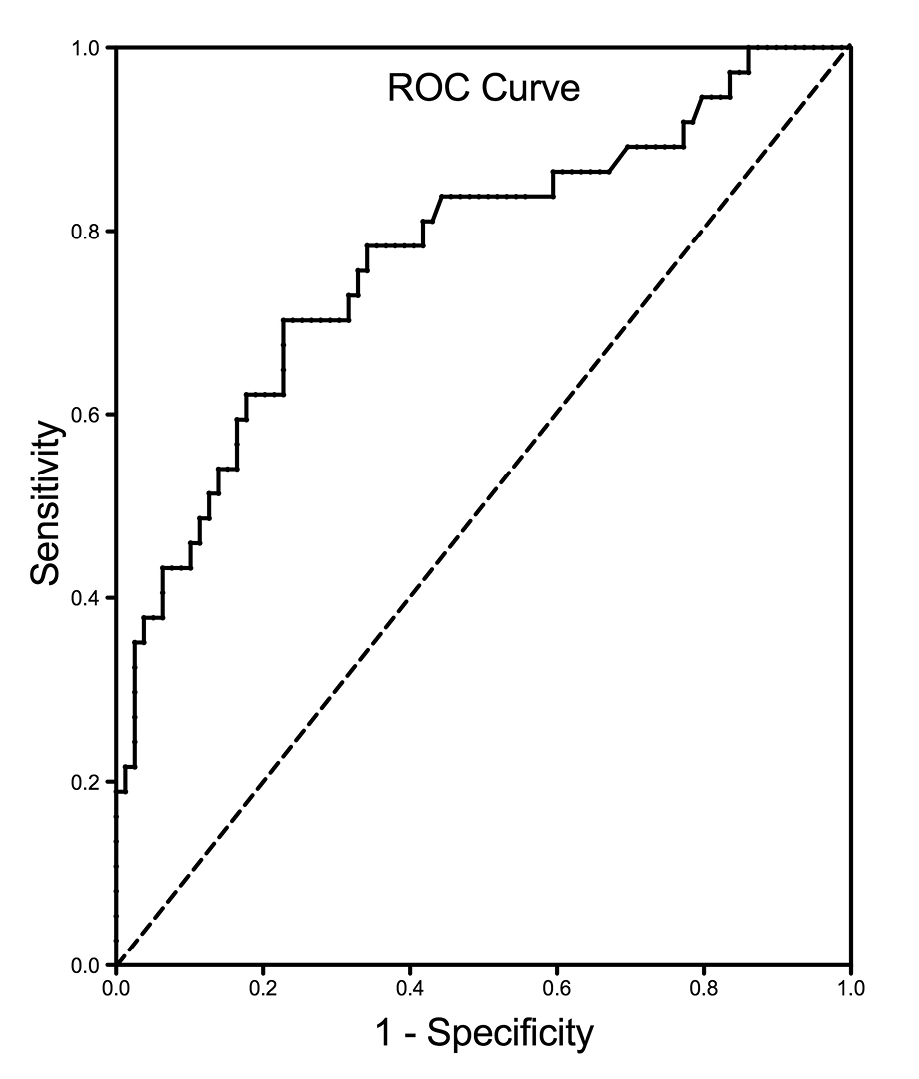
DISCUSSION
CONCLUSIONS
- Pisitkun T, Shen R, Knepper MA (2004) Identification and proteomic profiling of exosomes in human urine. Proc Natl Acad Sci U S A 101: 13368-13373. doi: https://doi.org/10.1073/pnas.0403453101. [View Article] [PubMed] [Google Scholar]
- Théry C, Amigorena S, Raposos G, Clayton A (2006) Isolation and characterization of exosomes from cell culture supernatants and biological fluids. In Current Protocols in Cell Biology. John Wiley & Sons, Inc., New York; pp 23.22.21-23.22.29.
- Soo CY, Song Y, Zheng Y, Campbell EC, Riches AC, et al. (2012) Nanoparticle tracking analysis monitors microvesicle and exosome secretion from immune cells. Immunology 136: 192-197. doi: https://doi.org/10.1111/j.1365-2567.2012.03569.x. [View Article] [PubMed] [Google Scholar]
- Riches A, Campbell E, Borger E, Powis S (2014) Regulation of exosome release from mammary epithelial and breast cancer cells – A new regulatory pathway. Eur. J. Cancer 50: 1025-1034. doi: https://doi.org/10.1016/j.ejca.2013.12.019. [View Article] [PubMed] [Google Scholar]
- Hao S, Bai O, Li F, Yuan J, Laferte S, et al. (2006) Mature dendritic cells pulsed with exosomes stimulate efficient cytotoxic T-lymphocyte responses and antitumour immunity. Immunology 120: 90-102. doi: https://doi.org/10.1111/j.1365-2567.2006.02483.x. [View Article] [PubMed] [Google Scholar]
- Kosaka N, Iguchi H, Hagiwara K, Yoshioka Y, Takeshita F, et al. (2013) Neutral sphingomyelinase 2 (nSMase2)-dependent exosomal transfer of angiogenic microRNAs regulate cancer cell metastasis. J. Biol. Chem 288: 10849-10859. doi: https://doi.org/10.1074/jbc.M112.446831. [View Article] [PubMed] [Google Scholar]
- Peinado H, Alečković M, Lavotshkin S, Matei I, Costa-Silva B, et al. (2012). Melanoma exosomes educate bone marrow progenitor cells toward a pro-metastatic phenotype through MET. Nature Medicine 18: 883-891. doi: https://doi.org/10.1038/nm.2753. [View Article] [PubMed] [Google Scholar]
- Marleau AM, Chen C, Joyce JA, Tullis RH (2012) Exosome removal as a therapeutic adjuvant in cancer. J Transl Med 10: 134-1. doi: https://doi.org/10.1186/1479-5876-10-134. [View Article] [PubMed] [Google Scholar]
- Skog J, Würdinger T, van Rijn S, Meijer DH, Gainche L, et al. (2008) Glioblastoma microvesicles transport RNA and proteins that promote tumour growth and provide diagnostic biomarkers. Nat Cell Biol 10: 1470-1476. doi: https://doi.org/10.1038/ncb1800. [View Article] [PubMed] [Google Scholar]
- Lv L, Cao Y, Liu D, Xu M, Liu H, et al. (2013) Isolation and quantification of microRNAs from urinary exosomes/microvesicles for biomarker discovery. Int J Biol Sci 9: 1021-1031. doi: https://doi.org/10.7150/ijbs.6100. [View Article] [PubMed] [Google Scholar]
- Huang X, Liang M, Dittmar R, Wang L (2013) Extracellular microRNAs in urologic malignancies: chances and challenges. Int J Mol Sci 14: 14785-14799. doi: https://doi.org/10.3390/ijms140714785. [View Article] [PubMed] [Google Scholar]
- Taylor DD, Gercel-Taylor C (2008) MicroRNA signatures of tumor-derived exosomes as diagnostic biomarkers of ovarian cancer. Gynecol Oncol 110: 13-21. doi: https://doi.org/10.1016/j.ygyno.2008.04.033. [View Article] [PubMed] [Google Scholar]
- Rosell R, Wei J, Taron M (2009) Circulating MicroRNA Signatures of Tumor-Derived Exosomes for Early Diagnosis of Non-Small-Cell Lung Cancer. Clin Lung Cancer 10: 8-9. doi: https://doi.org/10.3816/CLC.2009.n.001. [View Article] [PubMed] [Google Scholar]
- Rabinowits G, Gerçel-Taylor C, Day JM, Taylor DD, Kloecker GH (2009) Exosomal microRNA: a diagnostic marker for lung cancer. Clin Lung Cancer 10: 42-46. doi: https://doi.org/10.3816/CLC.2009.n.006. [View Article] [PubMed] [Google Scholar]
- Beckham CJ, Olsen J, Yin PN, Wu CH, Ting HJ (2014) Bladder cancer exosomes contain EDIL-3/Del1 and facilitate cancer progression. J. Urology 192: 583-592. doi: https://doi.org/10.1016/j.juro.2014.02.035. [View Article] [PubMed] [Google Scholar]
- Chen C, Lai Y, Tang P, Chien K, Yu J, et al. (2012) Comparative and targeted proteomic analyses of urinary microparticles from bladder cancer and hernia patients. J Proteome Res 11: 5611-5629. doi: https://doi.org/10.1021/pr3008732. [View Article] [PubMed] [Google Scholar]
- Lucocq J, Manifava M, Bi K, Roth MG, Ktistakis NT (2001) Immunolocalisation of phospholipase D1 on tubular vesicular membranes of endocytic and secretory origin. Eur. J. Cell Biol 80: 508-20. doi: https://doi.org/10.1078/0171-9335-00186. [View Article] [PubMed] [Google Scholar]
- Lucocq J (2012) Can data provenance go the full monty?. Trends Cell Biol 22: 229-230. doi: https://doi.org/10.1016/j.tcb.2012.03.001. [View Article] [PubMed] [Google Scholar]
- Oosthuyzen W, Sime NEL, Ivy JR, Turtle EJ, Street JM, et al. (2013) Quantification of human urinary exosomes by nanoparticle tracking analysis. J Physiol 591: 5833-5842. doi: https://doi.org/10.1113/jphysiol.2013.264069. [View Article] [PubMed] [Google Scholar]
- Gardiner C, Ferreira YJ, Dragovic RA, Redman CWG, Sargent IL (2013) Extracellular vesicle sizing and enumeration by nanoparticle tracking analysis. J. Extracell Vesicles 2: 1-11. doi: https://doi.org/10.3402/jev.v2i0.19671. [View Article] [PubMed] [Google Scholar]
- Sokolova V, Ludwig A, Hornung S, Rotan O, Horn PA, et al. (2011) Characterisation of exosomes derived from human cells by nanoparticle tracking analysis and scanning electron microscopy. Colloids Surf B Biointerfaces 87: 146-150. doi: https://doi.org/10.1016/j.colsurfb.2011.05.013. [View Article] [PubMed] [Google Scholar]
- Akers JC, Gonda D, Kim R, Carter BS, Chen CC (2013) Biogenesis of extracellular vesicles (EV): exosomes, microvesicles, retrovirus-like vesicles, and apoptotic bodies. J Neurooncol 113: 1-11. doi: https://doi.org/10.1007/s11060-013-1084-8. [View Article] [PubMed] [Google Scholar]
- Mathivanan S, Ji H, Simpson RJ (2010) Exosomes: extracellular organelles important in intercellular communication. J Proteomics 73: 1907-1920. doi: https://doi.org/10.1016/j.jprot.2010.06.006. [View Article] [PubMed] [Google Scholar]
- Zheng Y, Campbell EC, Lucocq J, Riches A, Powis SP (2012) Monitoring the Rab27 associated exosome pathway using nanoparticle tracking analysis. Exp Cell Res 12: 1706-1713. doi: https://doi.org/10.1016/j.yexcr.2012.10.006. [View Article] [PubMed] [Google Scholar]
- Lokeshwar VB, Habuchi T, Grossman HB, Murphy WM, Hautmann SH, et al. (2005) Bladder tumor markers beyond cytology: International Consensus Panel on bladder tumor markers. Urology 66: 35-63. doi: https://doi.org/10.1016/j.urology.2005.08.064. [View Article] [PubMed] [Google Scholar]
- Li Y, Zhang Y, Qiu F, Qiu Z (2011) Proteomic identification of exosomal LRG1: a potential urinary biomarker for detecting NSCLC. Electrophoresis 32: 1976-1983. doi: https://doi.org/10.1002/elps.201000598. [View Article] [PubMed] [Google Scholar]
- Mitchell PJ, Welton J, Staffurth J, Court J, Mason MD, et al. (2009) Can urinary exosomes act as treatment response markers in prostate cancer?. J Transl Med 7: 4. doi: https://doi.org/10.1186/1479-5876-7-4. [View Article] [PubMed] [Google Scholar]
- Nilsson J, Skog J, Nordstrand A, Baranov V, Mincheva-Nilsson L, et al. (2009) Prostate cancer-derived urine exosomes: a novel approach to biomarkers for prostate cancer. Br J Cancer 100: 1603-1607. doi: https://doi.org/10.1038/sj.bjc.6605058. [View Article] [PubMed] [Google Scholar]
- Blackwell RH, Franzen CA, Flanigan RC, Kuo PC, Gupta GN (2014) The untapped potential of urine shed bladder cancer exosomes: biomarkers, signalling and therapeutics. Bladder 1: e7. doi: https://doi.org/10.14440/bladder.2014.38. [View Article][Google Scholar]
- Franzen CA, Simms PE, Van Huis AF, Foreman KE, Kuo PC, et al. (2014) Characterization of uptake and internalization of exosomes by bladder cancer cells. Biomed Res Int 2014: 619829. doi: https://doi.org/10.1155/2014/619829. [View Article] [PubMed] [Google Scholar]
- Yang L, Wu X, Wang D, Luo C, Chen L (2013) Bladder cancer cell-derived exosomes inhibit tumor cell apoptosis and induce cell proliferation in vitro. Mol Med Rep 8: 1272-1278. doi: https://doi.org/10.3892/mmr.2013.1634. [View Article] [PubMed] [Google Scholar]

